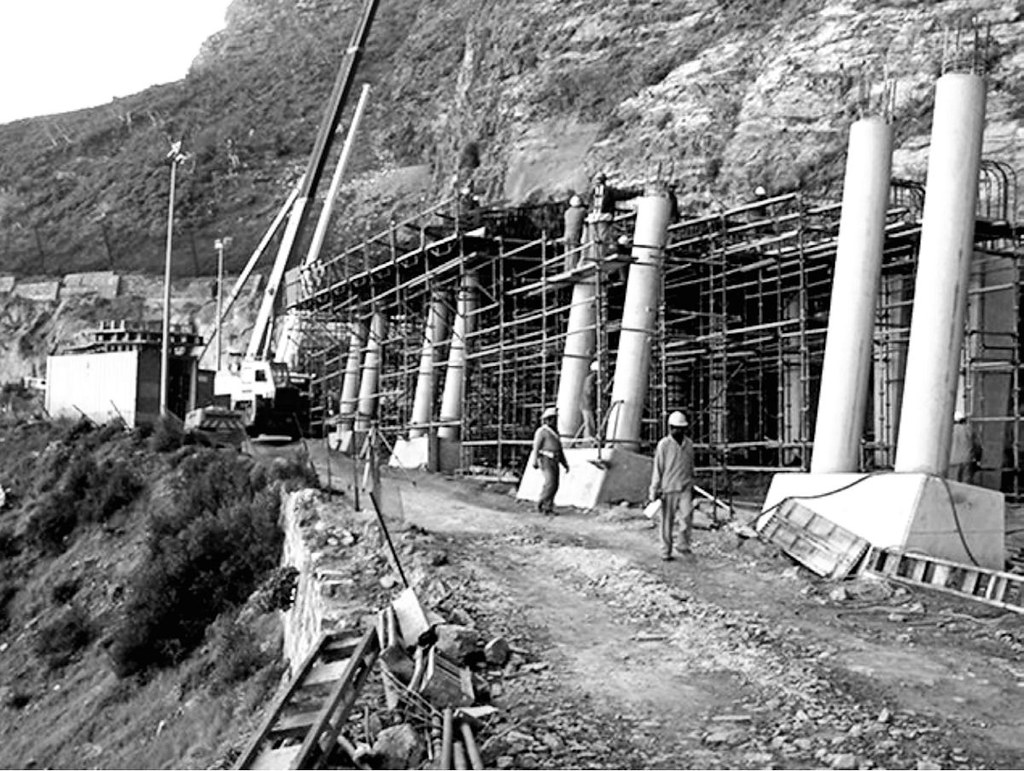
Chapmans Peak Construction of the Cantilevered Rock Canopy over the Road
Chapman’s Peak Drive has an interesting history. It was the brainchild of Sir Frederic de Waal, the first administrator of the Cape Province (De Waal Drive in Cape Town was named after him). Work on the route began in 1915 and the formal opening took place in 1922. Unfortunately, rock falls caused the closure of this splendid national treasure in January 2000. Public pressure requested the reopening, with this came a feat of astounding engineering vision. A consortium of companies were awarded a concession to restore this mountain pass to its former glory and to put in place several safety measures that would limit further fatalities from occuring.
Magnificent Chappies – Chapman’s Peak and it’s wonderful history
Chapman’s Peak, fondly also known as Chappies, is without a doubt one of the most popular attractions in Cape Town. Chapman’s Peak, situated between Noordhoek and Hout Bay, is a 9 km route which has 114 splendid curves. Chapman’s Peak wasn’t named after a queen or a brave world-known explorer, but after John Chapman, a Captain’s mate of an English ship named the Consent. To put it bluntly, John Chapman was nothing more than a lowly ship’s pilot. What happened was in 1907 the Consent found itself deserted in the waters surrounding Hout Bay and its Captain sent John Chapman to row to shore in hope of finding supplies. Later the pilot recorded the bay as Chapman’s Chaunce (chance) and the name stuck.
After Sir Nicolas Frederick de Waal, who was first administrator of the Cape Province, ordered the construction of De Waal Drive (the high-level road linking the Southern Suburbs with Cape Town) he wanted a road linking Hout Bay and Noordhoek. Surveys on the road started in 1914 and was, to say the least, a scary expedition. The cliffs and ravines were unstable and extremely steep, leaving the surveyors uncomfortable and somewhat scared. The Nek of the route proved to be equally daunting and it became clear that the project would be expensive, but De Waal refused to let the plans for the route be dismissed and eventually plans for the road to be built along the cliffs continued.
All in all, Chapman’s Peak took seven years to complete at a cost of ₤20 000. On 6 May 1922 the road connecting Hout Bay and Noordhoek was opened by the Governor of the Union of South Africa, His Royal Highness Prince Arthur of Connaught.
Problems however, started in 1977 when a portion of the road washed away and the road had to be closed for maintenance. After maintenance was completed and the road opened again difficulties continued in the 1990’s and in 2000 the road was closed indefinitely.
Chapman’s Peak stayed closed for three years, during which time many changes were made to the road. The reopening of Chapman’s Peak Drive is the culmination of one of the most innovative road engineering projects (upgrading and reconstruction) ever to be undertaken in South Africa. Chapman’s Peak Drive was re-opened as a Toll Road in December 2003. The new Chapman’s Peak opened with a toll gate on the Hout Bay side and became an official tourist attraction for international and national visitors to Cape Town.

1 Comment
In the 90s My friend and I did a project “Should Chapman’s Peak be closed?” It won a bronze medal and was displayed at UCT.
We had details of the plants, the overhang structure and how they could turn the road into a toll road.
My dad worked for the road agency, this was his section of road he had to take care of and we had given questionaires to the men who risked their lives in bad weather fixing that road on stormy nights. All of them said they loved the pass and didnt want it closed.
We got questionaires back from commuters who risked the rock falls to use the pass.
We got sample plants from the forestry department and and the local horticulturist there to advise on what plants would help.
To this day I always wonder who was the engineering genius who saw my and Donna’s project at UCT and who took all our information and thought – GOLDEN! Two girls from Fish Hoek School.